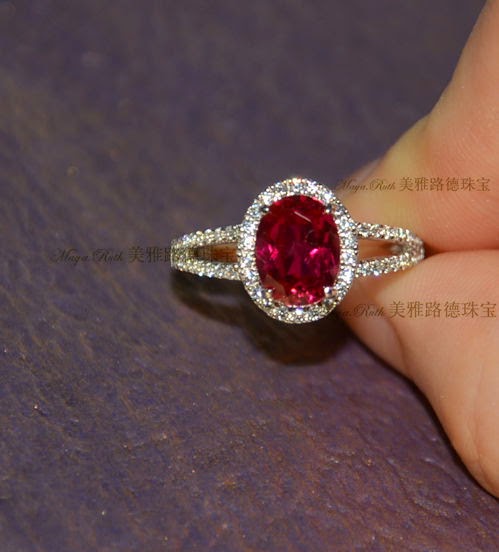Let me start this one out by clearing up a common misconception: Synthetics are not fake gemstones. They're real gemstones with the exact same chemical composition of their natural counterparts that are man made and lab grown. Essentially science has learned how to speed up the natural growth process of gemstones.
I also want you to know, "synthetic" is NOT a four-letter word in the gemstone world. As long you're buying a piece with full knowledge that the stone is man made, you can acquire some amazing pieces that are typically more durable and have more vibrant colors than their natural equivalent.
 |
| Photo from GIA.edu |
 |
| Photo from GIA.edu |
 |
| www.alibaba.com |
 |
| www.rubylane.com |
However, as all of my blogs tend to be themed: buyer beware. Don't think that because you have a stone that's not so perfect in color and has inclusions that it has to be a natural stone. The creators of synthetics have gotten very smart about their growth process. They grow their stones with inclusions and with lower quality color to try to make them even more similar to their natural counterpart.
The only way to truly determine if a stone is synthetic is through magnification. If you own a loupe you can use it to check for signs of synthetic. Unfortunately (you're going to kill me when I tell you this) very rarely natural stones will have similar inclusions to synthetic.
Head spinning yet? I know mine is.
Here are a few inclusions to look out for when you buy a stone and suspect it may be synthetic:
 |
| photo from www.theconcernedgemologist.com |
Chevron patterns are common in synthetic stones. Curved growth patterns and gas bubbles are also common in synthetics. Most natural stones have straight or angular growth patterns.
 |
| GIA.edu |
The following inclusion, which is called a nailhead spicule is never found in a natural stone.
Again, as I've said before and will say a million times again, there's nothing wrong with synthetic stones, just know what you're paying for. There are very many unscrupulous vendors who will try to sell synthetic stones as natural which can cost many times more. Sometimes vendors aren't unscrupulous, just uninformed. Colored stones are a tough world to navigate. Beware of everything you buy. If you're buying an expensive Columbian emerald, make sure it has certificate verifying its nature. But if you're buying a nice green stone from Macy's, don't worry so much. Colored stones are gorgeous. Period. As long as you're fully aware of what you own.
I hope you have an blingtastic rest of your weekend.


No comments:
Post a Comment